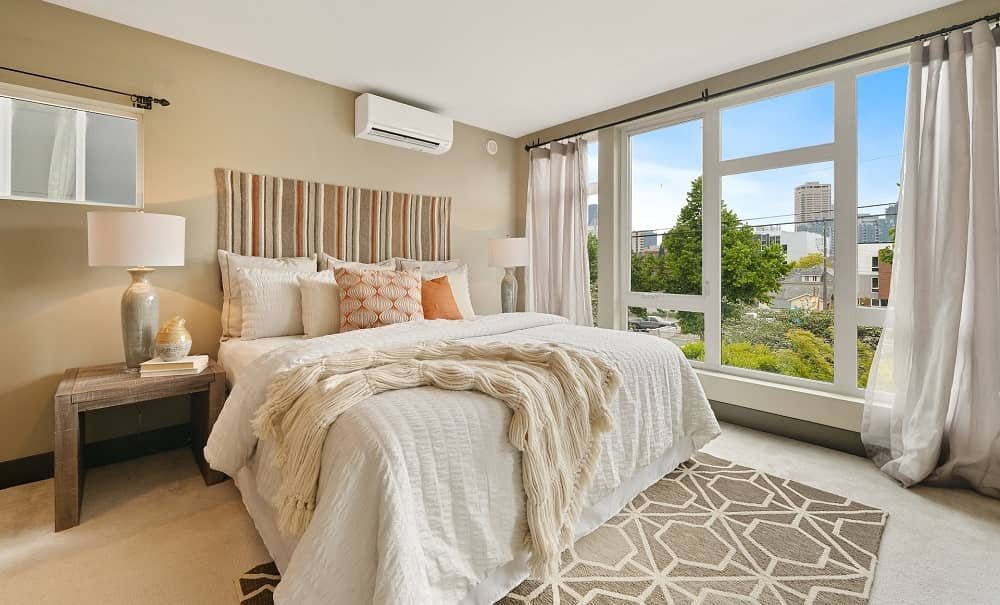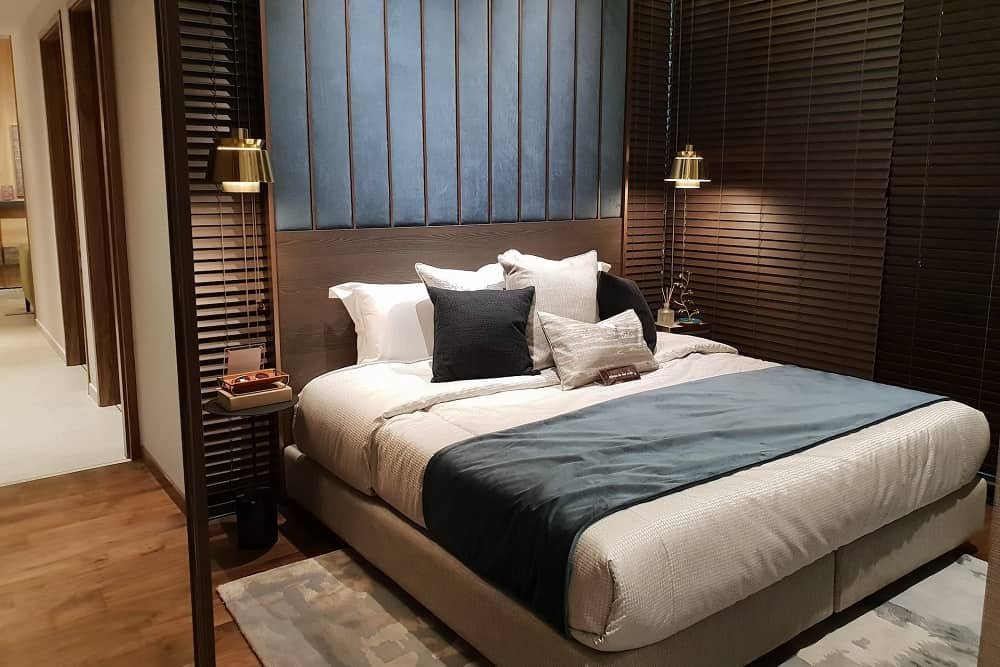Getting a good night’s rest is essential for health and wellbeing, yet so many of us still don’t pay close enough attention to how our bedroom design affects the quality of sleep we get each night. Comfort is important – but too much comfort can mean the lack of necessary functionality in making your bedroom space truly supportive of your overall long-term health goals. With this blog post, we’ll dive into why optimal bedroom design balances both comfort and functionality, so you can start feeling more rested and refreshed each morning.
The Bed Is King
The bed, undoubtedly, takes the crown in bedroom design. It’s not just a place to sleep, but a cornerstone of your sanctuary. An optimal bed supports your body comfortably while facilitating proper posture and circulation. From the quality of the organic mattress to the type of pillows and linens, each aspect plays a significant role in the overall comfort and functionality. For instance, memory foam mattresses can help maintain spinal alignment, hypoallergenic pillows can reduce potential allergy triggers, and breathable linens can regulate body temperature while you sleep.
But the bed itself is just one piece of the puzzle. The placement of your bed about other furniture and objects in the room can also impact its functionality. For instance, having a nightstand or bedside table within reach can help keep essentials like water or books close at hand. On the other hand, having a cluttered or cramped bedroom layout can negatively impact both comfort and functionality.
Lighting Matters
Lighting is another crucial element to consider when designing your bedroom for optimal comfort and functionality. Natural light during the day can boost mood and energy levels, while proper artificial lighting in the evening can help prepare your body for sleep. Dimmable lights and blackout curtains can be great options for controlling light levels in your bedroom.
Additionally, incorporating ambient lighting, such as reading lamps or soft overhead lights, can create a cozy and inviting atmosphere. This not only enhances comfort but also adds functionality by allowing you to perform tasks like reading or getting dressed with ease.
Climate Control
Temperature and air quality play a significant role in the overall comfort and functionality of your bedroom. A room that is too hot or too cold can disrupt sleep, while poor air quality can lead to health issues such as allergies or respiratory problems. Investing in a good heating and cooling system, along with proper ventilation, can help regulate temperature and maintain air quality in your bedroom. Plants can also be a natural way to improve air quality and add a touch of nature to your space.
Balancing Style and Functionality
While functional elements are significant, the style of your bedroom should not be overlooked either. After all, your bedroom is a reflection of your taste and can greatly contribute to your sense of well-being. When selecting furniture, consider items that are not only aesthetically pleasing but also serve a specific purpose. A stylish chair, for instance, can also be a cozy reading nook. Wall colors and textures should soothe and calm, while also setting the tone for your decor.
Art pieces and personal mementos can be displayed with thoughtfulness, adding personality and uniqueness to the room without creating clutter. Remember, a bedroom that successfully marries style and functionality will not only promote better sleep but also enhance your quality of life. Incorporating these principles in your bedroom design will help create a space that truly feels like your personal sanctuary.

Personalization and Expression
Your bedroom is more than a place to sleep; it is a canvas for personal expression and creativity. Personalizing your bedroom according to your unique tastes and preferences can significantly enhance both comfort and functionality. This might include choosing a color palette that resonates with you, decorating with art or photographs that inspire you, or incorporating elements from your favorite hobbies or pastimes. Carefully chosen furnishings and decor pieces can tell your story, reflecting your personality and passions. From the books on your shelf to the art on your walls, every item can serve as a form of self-expression. A bedroom that truly reflects you will not only be a comfortable and functional space but also a place where you feel truly at home.
Tech Integration
These days, technology is ingrained in every part of our existence. This extends to the bedroom as well. Integrating smart technology can significantly enhance the comfort and functionality of your bedroom. A smart thermostat, for instance, can automate temperature control, ensuring your room is always at a comfortable temperature. Blackout curtains or blinds can be automated to open or close based on the time of day or light levels, optimizing your exposure to natural light.
Smart lighting can be programmed to gradually dim as you prepare for bed, promoting better sleep. Not to mention, wireless charging stations and integrated USB ports in bedside tables provide convenience for charging your devices. Voice-activated assistants can help control these features hands-free and even customize your morning alarms. Embracing tech integration in your bedroom design is a step towards a more comfortable, functional, and modern space.
Choosing Calming Colors
The choice of color in your bedroom design plays a significant role in fostering a calming and soothing environment. Colors can greatly impact your mood and subconscious, so it’s essential to choose a palette that promotes relaxation and tranquility. Shades of blue, often associated with calmness and serenity, can help reduce stress and lower heart rates.
Similarly, softer tones like pastels, earthy neutrals, or muted greens can induce a peaceful atmosphere. Combining these with contrasting color accents can add depth and interest without disturbing the overall calming ambiance. Remember, the goal is to create a visually comforting space where you can unwind and rejuvenate. Therefore, consider your associations with color and select a scheme that resonates with calm and relaxation.
In conclusion, a bedroom that balances comfort and functionality is essential for promoting quality sleep and overall well-being. By considering elements such as the bed, lighting, climate control, style, personalization, and tech integration, you can create a space that caters to your unique needs and preferences while also enhancing your daily life. Don’t neglect the importance of optimal bedroom design – it’s an investment in your health and happiness. So, take the time to carefully design and curate your bedroom space, and you’ll soon see the positive impact it has on your sleep and overall quality of life. Sweet dreams!

